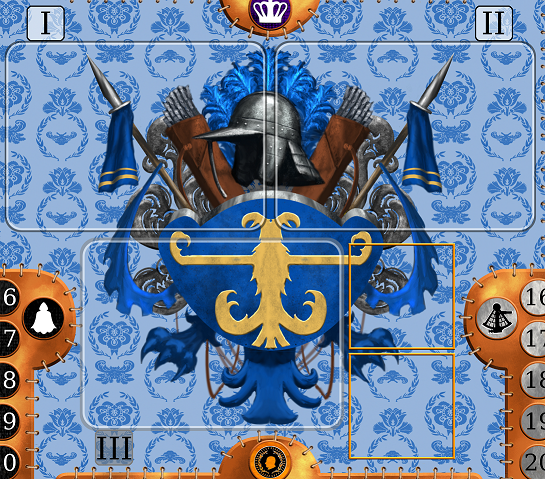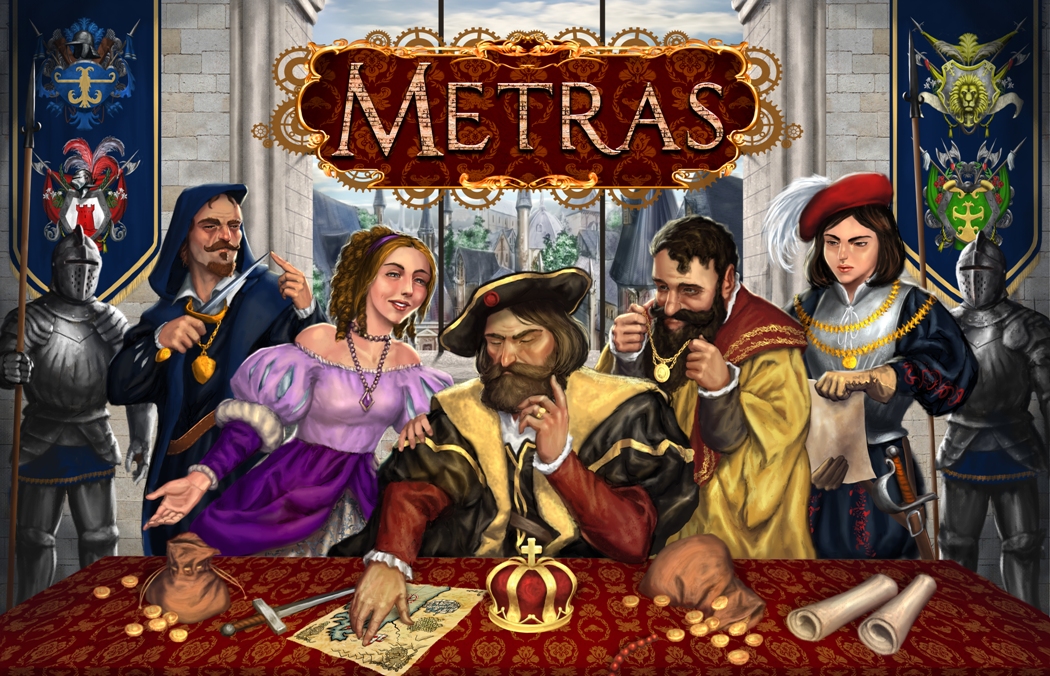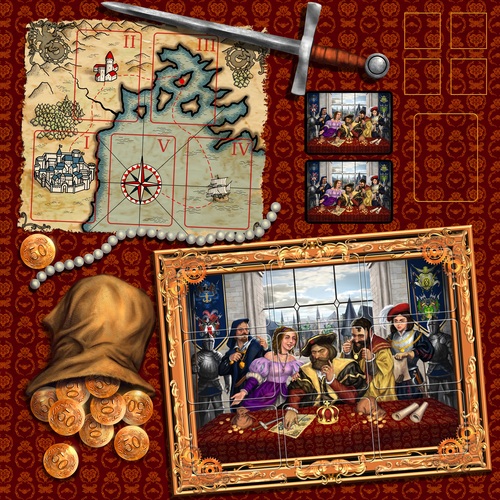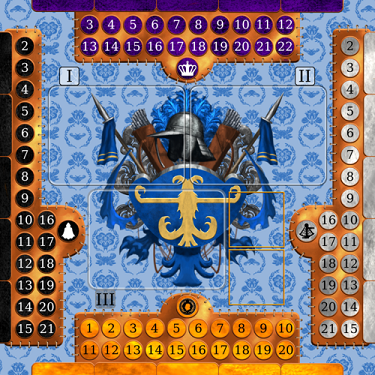Welcome back to our appointment with this last chapter on the exploration of Metras. As we said last time, now we will have a closer look inside the turn sequence.
While the duration of a complete game of Metras is 5 turns, a single turn is organized in the following 4 phases:
- Market Phase
- Auction Phase
- Resolution Phase
- Collection Phase
- MARKET PHASE
At the beginning of the phase players can place the Allies from their reserve on any field they want. Then they draw the new Action cards to be placed on the board depending on the number of players: 7 cards if there are 3 players, 9 cards if there are 4 players.
For the first 3 turns the cards deck I is used, while for the remaining 2 turns the cards deck II is used.


Finally, the pertinent Mission Card for the turn in progress is revealed (remember: it’s the card with the current turn number on its back).

2. AUCTION PHASE
Starting from the first player (for turn n° 1) or from the “Favorite of the Emperor” (from the 2nd turn on), the active player places one counter on the card which he wants to start the bid for and bets an amount of Influence Points between “0” and the maximum value available at that moment in his reserve. Proceeding clockwise, all the players decide either to pass or place another bid raising the offer made by the last player.
The winning bidder pays the due amount, takes the card and places it on the action slot with the lowest number still available on the player sheet, but without completing the indicated action on the card.

Regardless of whether the player who started the bidding wins, the following player in the clockwise order starts the bidding for another action card present on the board, and so on until all the players have no more counters to place.
3. RESOLUTION PHASE
Starting from the “Supplicant”, the player who had the lowest Influence Points at the end of the last turn, the players, in turn, start to resolve the action on the cards won during the Bidding Phase one by one. All players resolve in order and in turn the action cards present on the slot 1 and then on the slot 2 of the player sheet.
4. COLLECTION PHASE
At the beginning of the Collection Phase, each player earns a total of Influence Points equal to the number indicated on the Wealth Branch of his own Family Card (player sheet). After that the roles of “the Favorite of the Emperor” and “the Supplicant” are distributed as follows:
- The Favorite of the Emperor: this is the player who has the most Influence Points. This role also gives a huge advantage in the next Bidding Phase: he can buy the first action card of the bid paying the amount of Influence Points equal to 4 times the number of the ongoing turn (8 IP on the 2nd turn, 12 on the 3rd, and so on…) directly to the bank;
- The Supplicant: this is the player with the least Influence Points. This role, although sometimes “unpleasant”, in reality hides a quite important bonus: he receives a grey counter and he will be allowed to acquire 3 action cards in the next Bidding Phase.
Once this phase is completed, the players are ready for a new turn!
As you may see, the turn is very simple and quick, but hides some little “tricks” to be taken into account:
- the order of the action cards to be won is important, as well as to paying attention to the resolving order (considering that starts from the Supplicant);
- manage as bes possible the bidding phase without exaggerating, considering that the “money” is represented by the Victory Points.
Obviously if a game does not go well, simply start a new one! In the end with 4 players, this is a game that lasts easily about 1 hour!…….ENJOY IT!

























